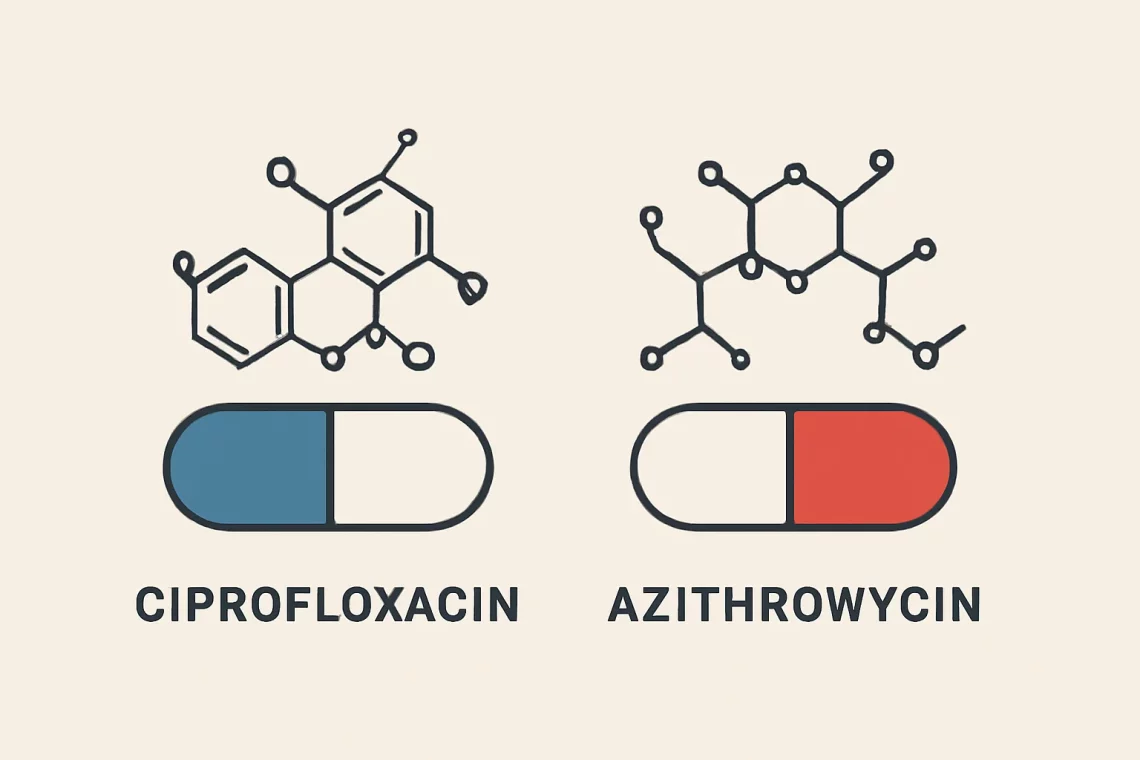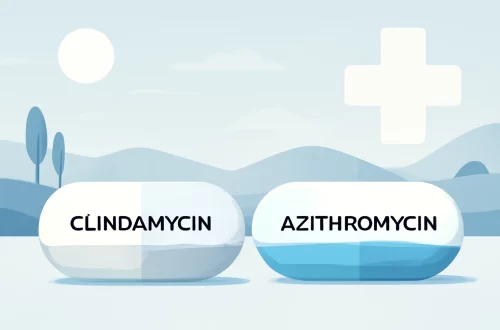-
Clonazepam vs Diazepam: Key Differences and Uses Explained
Clonazepam and diazepam are two medications belonging to the benzodiazepine class, widely used for their anxiolytic, anticonvulsant, and muscle relaxant properties. Both drugs have been prescribed for various conditions, including anxiety disorders, panic attacks, and seizures. Their effectiveness and the specific situations they are prescribed for can vary widely, making it crucial to understand their unique characteristics, benefits, and potential side effects. As mental health awareness grows, understanding the differences between these medications becomes increasingly important for patients and healthcare providers alike. While both clonazepam and diazepam serve similar purposes, they also have distinct pharmacological profiles, which can influence treatment decisions. The choice between clonazepam and diazepam often depends on…
-
Benzonatate vs Codeine: Understanding Their Differences and Uses
Benzonatate and codeine are two medications commonly used to manage coughs, but they operate in distinctly different ways and have varying implications for patient care. Benzonatate is a non-narcotic cough suppressant that works by numbing the throat and lungs, reducing the urge to cough. On the other hand, codeine is an opioid that not only relieves cough but also serves as a pain reliever. Understanding the differences between these two medications is crucial for patients who may be considering their options for cough relief. Coughing can be a bothersome symptom caused by various conditions, including allergies, colds, and respiratory infections. Both benzonatate and codeine have their places in treatment protocols,…
-
Ciprofloxacin vs Azithromycin: Comparing Antibiotics for Infections
Ciprofloxacin and Azithromycin are two widely used antibiotics that belong to different classes of antimicrobial agents. Each drug has its unique mechanism of action, spectrum of activity, and clinical applications. Understanding the differences and similarities between these two medications is crucial for both healthcare professionals and patients alike. Ciprofloxacin, a fluoroquinolone antibiotic, is known for its broad-spectrum efficacy against a variety of bacterial infections. It works by inhibiting bacterial DNA gyrase and topoisomerase IV, enzymes that are essential for bacterial DNA replication, transcription, and repair. This action leads to the death of susceptible bacteria. Ciprofloxacin is often prescribed for respiratory, urinary tract, and skin infections, as well as specific gastrointestinal…
-
Methylprednisolone vs Prednisolone: Key Differences and Uses
Methylprednisolone and prednisolone are two corticosteroid medications commonly used in the treatment of various inflammatory and autoimmune conditions. These drugs mimic the effects of hormones that are naturally produced in the adrenal glands, helping to reduce inflammation and suppress the immune response. While they share many similarities, understanding the differences between these two medications is crucial for both patients and healthcare providers. The choice of medication can significantly impact treatment outcomes, as each has unique properties that may suit different conditions or patient profiles. Factors such as the potency, duration of action, and side effects play vital roles in determining which medication is more appropriate in a given situation. As…
-
Naltrexone vs Naloxone: Understanding Their Differences and Uses
Naltrexone and naloxone are two medications that often come up in discussions surrounding addiction treatment and opioid overdose response. Both drugs belong to the class of opioid receptor antagonists, which means they work by blocking the effects of opioids in the brain. While they share some similarities, their uses, mechanisms, and effects differ significantly. Understanding the distinctions between naltrexone and naloxone is crucial for healthcare professionals, patients, and families affected by substance use disorders. The opioid epidemic has made the need for effective treatment options and emergency responses more urgent than ever. As communities strive to combat addiction and reduce the number of opioid-related deaths, these two medications play vital…
-
Amoxicillin vs Levaquin: Understanding Their Differences and Uses
Amoxicillin and Levaquin are two widely used antibiotics, each with distinct mechanisms of action and treatment applications. Understanding the differences between these medications is crucial for both healthcare providers and patients. Antibiotics play a vital role in combating bacterial infections, but their effectiveness can vary depending on the type of bacteria involved and the specific properties of the medication. Amoxicillin, a member of the penicillin class, is commonly prescribed for a variety of infections, including those affecting the respiratory tract and urinary system. It operates by inhibiting bacterial cell wall synthesis, leading to the death of susceptible bacteria. Levaquin, on the other hand, is a fluoroquinolone antibiotic that works by…
-
Azithromycin vs Erythromycin: Key Differences and Uses Explained
Azithromycin and erythromycin are two widely used antibiotics that belong to the macrolide class of medications. They are both effective in treating various bacterial infections by inhibiting bacterial protein synthesis, which ultimately leads to the death of the bacteria. Both drugs are commonly prescribed for respiratory tract infections, skin infections, and certain sexually transmitted infections, among others. Despite their similarities, there are significant differences between the two that can influence a physician’s choice of treatment. In clinical practice, understanding these differences is essential for selecting the appropriate antibiotic that will effectively target the infection while minimizing potential side effects. Factors such as bacterial resistance, patient tolerance, and specific infection types…
-
Xanax vs Librium: Understanding the Differences and Uses
Xanax and Librium are two medications that fall under the category of anxiolytics, commonly prescribed to manage anxiety and related disorders. While both drugs serve a similar purpose, they possess distinct characteristics, mechanisms of action, and potential side effects. Understanding these differences can be crucial for patients and healthcare providers alike. The increasing prevalence of anxiety disorders in today’s fast-paced world has heightened the demand for effective treatment options. As such, a thorough examination of anxiety medications like Xanax and Librium is essential for informed decision-making. When discussing anxiolytics, it’s important to recognize that they interact with the brain’s neurotransmitters, particularly gamma-aminobutyric acid (GABA). This interaction can lead to a…
-
Cyclobenzaprine vs Chlorzoxazone: Key Differences and Uses Explained
Cyclobenzaprine and chlorzoxazone are both medications commonly used to treat muscle spasms and discomfort. Although they serve similar purposes, these two drugs possess distinct properties, mechanisms of action, and side effects profiles. Understanding the nuances between cyclobenzaprine and chlorzoxazone can empower patients and healthcare providers to make informed decisions regarding treatment options. Muscle spasms can arise from various conditions, including injuries, overuse, or underlying medical issues. The sensation of tightness, pain, or restricted movement can significantly impact daily life, leading individuals to seek relief through medication. While both cyclobenzaprine and chlorzoxazone are classified as muscle relaxants, they differ in their chemical structure and how they interact with the nervous system.…
-
Narcan vs Naloxone: Understanding the Key Differences and Uses
The opioid crisis has become a significant public health concern, affecting millions worldwide. As the rates of opioid overdoses continue to rise, the need for effective intervention methods has never been more critical. Among the tools developed to combat this crisis, Narcan and naloxone have gained widespread attention and use. Both are essential in reversing the effects of opioid overdoses, but many people may not understand the nuances between the two. Narcan is a brand name for the generic medication naloxone, which is an opioid antagonist. When administered, naloxone can rapidly restore normal breathing in someone experiencing an opioid overdose, effectively saving lives. The public health community has increasingly advocated…







































